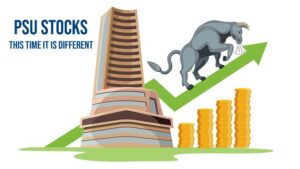By IE&M Research
I am planning to invest in the stock market. What should I look at while taking investment decision? Which are the companies you feel I should invest now?
– Subhash Das, Cuttack
Under the present environment where even albatrosses are flying high it’s imperative one exercises caution and pay heed to margin of safety. Protection of capital is of utmost importance as it’s very easy to be complacent and get carried away with few flukes based on hearsays. Naive investors should stick to the larger cap companies with a good past wealth generating track records. Any sectoral leaders with a great management would ensure decent double digit compounding in the next 5-10 years. You just simply can’t lose from an Asian Paints or a HDFC bank. Avoid companies which are out of your competence circle. Debt laden stories and companies with corporate governance issues should be strictly ignored. Apply common sense and make a habit of reading at least one hour a day. The world is changing pretty fast where most things are interconnected. If you stay updated with the happenings around, along with your wealth, your knowledge would compound too.
How do you foresee the next decade panning for stock markets?
– Jinia Sen, Howrah
In FY2017, equity, including mutual fund was only 3.8% of total asset of Indian households. In January 2008 this ratio was about 5.6%. So we are like nowhere near the peak. After the demonetization shock a lot of money is getting migrated to equities and further as financial literacy increases, more Indians would be inclined to bet on equities. Recently a Wealth Creation Report released by a top brokerage house stated that India’s GDP took 60 years (1948-2008) to hit its first trillion, next took 7 years (2008-2015), Third Trillion will take 5 years (2015-2020), and Fourth Trillion will take 3 years (2020-2023). The Sensex has grown like 100x in 32 years, at 15% CAGR. India remains the favorite investment destination and thus nobody can ignore the fastest growing economy in the world. Over the next 10 years, equities will beat other assets hands down provided one gets a bit meticulous on the stock picking. A lot of great companies backed by superb pedigrees are on the cusp of inflection point. They will certainly ensure one becomes liberated early in life. So we foresee the next decade panning for stock markets in a very good way.
Can you help me with some patterns which I can look while researching a company – patterns to find the next big multibagger.
– Dipu Paul, Assam
Here are some patterns for you:
- The negative working capital pattern where the business operates on other people’s money (OPM) or the supplier’s money. An advance from customers is a good hint to go by.
- Companies which are the leaders in a niche area with tiny market caps. Ones as they grow and market realises them, you get huge multibagger.
- Companies where there’s a promoter change or where the new generation takes over, brings efficiency and multibaggers evolve.
- Where there’s a demerger in a sizeable company. FII have got market cap stipulation and hence they tend to sell out in haste. Arvind Infra, Marico Kaya being examples of huge value creation.
- Companies which are eating into the market share of the market leaders. Amara Raja, Havells are good examples.
- 2nd run companies in sectors where the leaders have been multibaggers. At some time the valuation gets so stretched that investors start to look for the smaller peers and the valuation gap narrows. Avanti-Waterbase, Relaxo-Mirza are good examples.
- Companies with massive free cash flow generating ability and strong leverage. At some time the capex would be covered for next 3-4 years. So all OCF goes in debt repayment and NP vaults.
- Companies which are either outperforming strong headwinds or about to face tailwinds in their side.
These are some of the patterns you can follow. But this is not the final list.
Over the last six months, the commodity stocks are running wild? When to buy and exit a Commodity Stock?
– Sheikh Salim, Agra
We reached out to our commodity expert, Deepak Kapur to answer your question. In his words,”For investing in commodity stocks, the broad framework is NOT to delve much on the commodity price. That will be reactive investing and hard to time, especially with timing skills. But the good thing is price follows the supply and demand eventually. Entry and exit in commodity stocks have to be based on a study of the gap between capacity and its utilization in the industry. When there is evidence this gap is on course to start shrinking in the near future, that is a good time to consider investing. When there is evidence that the gap will start increasing, that is a good time to consider exiting. Waiting for the commodity’s price to top out is too late. Of course, some handle on valuations is important. Commodity investing is about watching the supply side intensely. It’s easier to see the larger picture from this angle and in time. The demand side is much tougher to predict. A lot of news keeps flowing about the supply side, consolidating or slowing, shutdowns, consolidation, over leveraged BSs implying no more borrowing possible to expand, etc. It takes time to play out but the evidence keeps building. Keeping an eye on the supply side is very remunerative”.





















